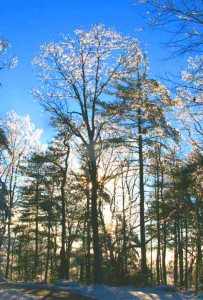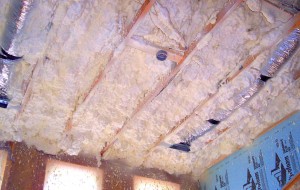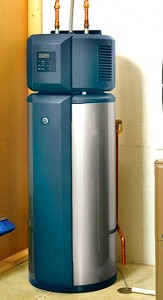This concerns the design of Green Homes. This seems to be a topic of great public interest these days. To those of us environmental architects who spent most of their 1970’s decade in college, it was called ecological or energy-efficient architecture back then.
Green Homes Design
So it is sometimes with a sigh, that licensed architects, who have been environmentally conscious, receive inquiries from people asking if we are “Green Architects?” Rand Soellner, AIA / NCARB, typically answers good-naturedly: “Yes, thanks for asking, I am a green architect. I have been ecologically oriented and have designed energy-conservative houses and buildings since the the early 1970s.”

The public, responding to news media, often regard Green Architecture and the design of green homes as something new. It is Not. Since the Pueblo Indians or even the legendary Anasazi tribes of the American Southwest, architecture and architects have learned, when they are interested to do so, how to appropriately respond to limited energy sources and comfortably blend with the environment around the construction.
People these days hear concerns about dwindling oil supplies and the petrochemical energy products that we all use to live, and they become concerned. Good. They should be concerned. And asking designers of new homes to create green residences is a good and proper response to these concerns.
What Can be Done?
Design Principles for Green Homes
People sometimes hear the word “green” or “green design,” and assume that merely by asking their architect to incorporate or design green features that there will be no financial impact on their new house. That is Not usually true. While there are some things that can be done that amount to little, if any increase in cost, many things that improve the energy efficiency, for instance, of a new residence, can be more costly for one’s initial investment.
People might ask: “What do you mean, more expensive for my ‘initial’ cost? Doesn’t that mean it Is more expensive?”
Here is where knowledgeable green design planners will become patient and explain what “Life Cycle Costing” means. A green architect at this point might say something like: “Well, yes, your original, or first cost, for increased insulation in your homes will typically cost you more up front. However, your monthly power bills should be significantly less, which means if you have paid cash for your house, you will be getting some of that cash back each month in the form of reduced energy bills.

If you have a mortgage on your residence, then some of what you pay each month to your lender will come back to you in lower electrical and gas consumption to heat and cool your house to keep it comfortable inside.” If you know how much it costs you per energy unit, like a kilowatt, and you know how many of those energy units you are saving per month because of the improved features, like improved and increased thermal insulation, then you can calculate how much per month you are saving. Some green design features result in a quick pay back of several months or within a year. Others may take 5 to 10 years.
What makes sense to you financially depends on your perceptions of how long you intend to occupy the house or building, how much you believe those increased green features will be worth to a future buyer, and your own sense of creating a greener residence or building that treats our planet in a friendlier manner for your future self and spouse, your children, and other future generations of human beings on this planet. Usually, most people can see an investment that pays them back within a decade as being a reasonable investment in their homes.
Green Homes During Construction
There is another construction aspect for green homes that should be addressed: construction practices. For instance for little to no extra, your green designer should specify having 2 smaller dumpsters on your construction site, rather than one huge dumpster. The reason: one dumpster can be labeled and used for landfill debris, the other dumpster can be labeled and used for recyclables, like clean cardboard, wood chips and unusable lengths of wood studs and beams and plywood.
The amount of debris created by the construction of a new residence can be just as large as the house itself. By cutting the amount of debris that goes into your local landfill by half, and reusing recyclable items, you are reducing the carbon footprint of your house on the planet, reducing the necessity to build a new huge power plant to feed your community, and reducing the harvesting of trees to make more products.
This is simply achieved by having 2 dumpster containers rather than one and having an arrangement with your dumpster provider to take the recyclable dumpster contents to a bona fide recycling center.
These are only a few of the things that can be done to make new residential construction and design of homes greener.
Design homes that are greener
Architects can design homes that are more energy efficient and more sensitive to the environment. Usually, the two activities go hand in hand. However, in order to have homes whose design is “greener,” takes clients who take the time to understand the implications of being more “green.” It is not just a trendy buzzword. It takes a commitment, usually of increased financial responsibility, to participate in a meaningful sense. Energy efficiency has got to be at the top of the list. This affects so many things, including your own monthly pocketbook, that it becomes a logical first choice for having homes that are tighter and more thermally resistive.
There are also ground-breaking improvements of certain devices that most of us take for granted. For instance, hot water heaters. There have been major changes and improvements with these humble heaters of water during the last decade. There are now tankless hot water heaters, that only heat the water when it is demanded. They heat the water instantaneously, thereby saving the energy that would have normally gone into heating the water all the time, day and night, in a large tank, that constantly needs more heat energy put into the large tank of water.

Also, a very clever idea is a Heat Pump water heater. This is a very smart idea, using waste heat to produce hot water. General Electric is one of the creators of this new technology (see photo pictured to left). This results in a much more efficient method of heating the water in your tank.
And let’s not forget your doors and windows. Double pane glass with a Low-E coating is a much better alternative than “going bare” with single pane ordinary glass.
There are many more green, energy efficiency and environmental aspects to the design of green homes. Please look around this website to see more. Thank you.
All of these newer systems, along with tried and true approaches as well, can help make your house more environmentally responsive, and yes, Green.
